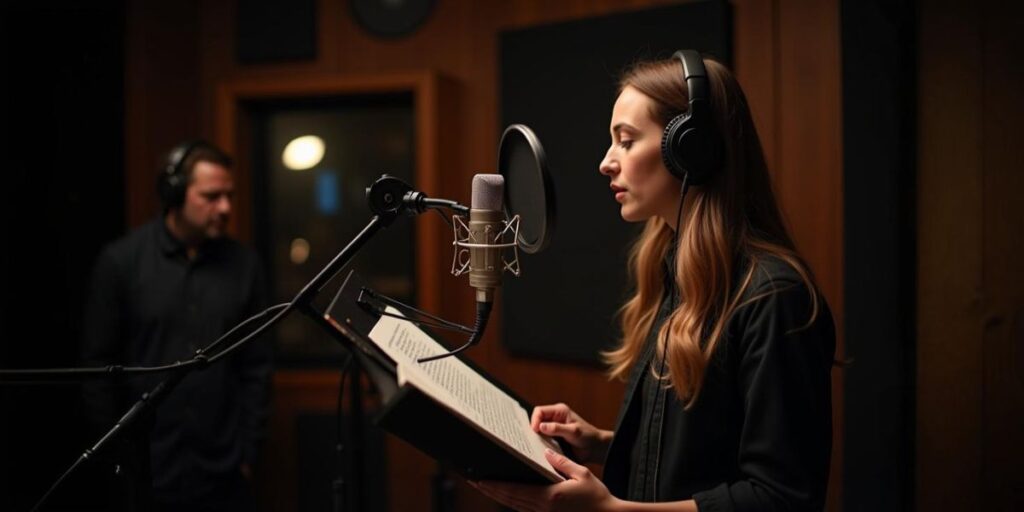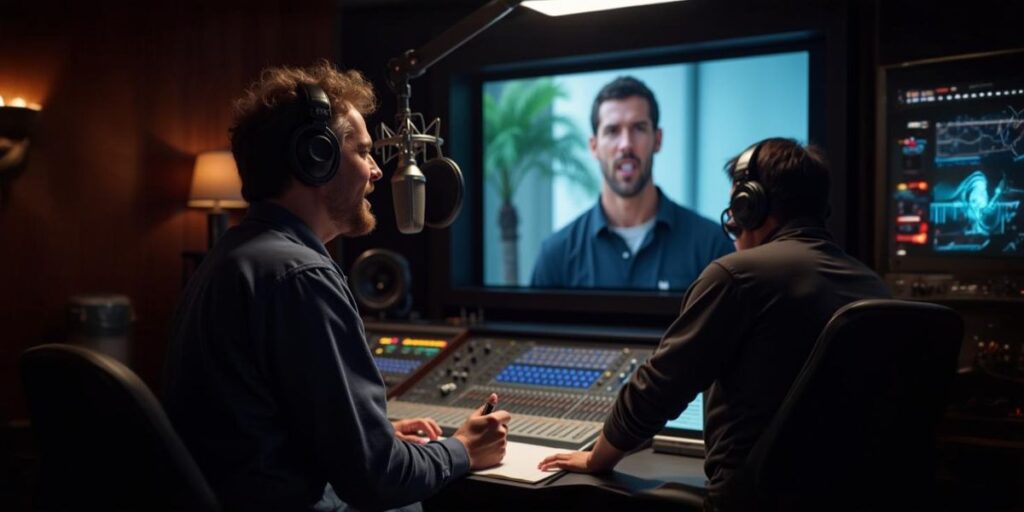From Voice-Over to Dubbing: Everything You Need to Know About Content Localization
Like many specialized fields, the world of media localization is full of terms that can be confusing for newcomers. Media localization encompasses everything from translating on-screen text and user interfaces to adapting subtitles, cultural references, and spoken content. This article focuses specifically on audio localization, an area that includes voice-over, dubbing, and narration. While each of these has distinct workflows and purposes, to the untrained ear they might sound interchangeable. Add to that the variety of industry-specific jargon used in different languages, and it’s easy to see how one can get lost in translation.
As specialists in the field, it’s our job to explain these differences to our clients and recommend the right service to convey the correct tone and message. A video game doesn’t need the same treatment as a movie, and an advertisement has a different approach than an e-learning material.
Let’s take an example: a Canadian marketing agency needs to create audiovisual content for a product in Uruguay. Should they look for voice-over, dubbing, or voice replacement? This raises the question, “What do they call it there?” While it may not seem like a big deal, it’s a more common issue than it seems. As we all know, content localization is a global industry, without borders but with multiple interpretations.
So, what do we need? Even though terms like voice acting and dubbing are used interchangeably, they’re technically not the same. What is called locución in Argentina may be referred to differently in the U.S. depending on the context.

There are two primary methods of translating audiovisual content, each with its variables. This isn’t intended to be a glossary, but rather a guide based on our years of experience in the industry. Let’s take a brief look at each one:
1. VOICE-OVER
Voice-over is the technique of overlaying a recorded voice onto audiovisual content without fully replacing the original audio and without the narrator appearing on screen. It is used in different contexts depending on the type of narration required. Commonly abbreviated as VO, “voice-over” is the most formal term, with voiceover being used more in modern and informal settings. In the LATAM localization industry, it is also known by the same term, though in various Spanish-speaking countries, it’s often generalized as locución (mainly in Spain) or voz en off (more commonly used in Latin America). Types of Voice-Over:
1.1 Narration (Narración in Spanish – Narração in Brazilian Portuguese)
It is a type of voice-over used to guide the viewer through content, providing additional information or context. The speaker is not physically in the scene. It can be omniscient or in the first person (like a diary or testimonial).
Uses: Documentaries, audiobooks, tutorials, e-learning, and educational content.
Advantages: Clarifies content, helps with understanding, and keeps the viewer’s attention without interfering with the visuals.
1.2 Off-Screen / Off-Camera Voice-Over (Voz en Off in Spanish – Voz em Off in Brz Portuguese)
This is an audio technique where a voice, generally off-screen, is used to comment or explain something related to what’s happening on screen.
Uses: Advertising, radio spots, corporate videos, e-learning.
Advantages: Allows clear and effective communication without showing the voice actor on screen.
1.3 UN-Style Voice-Over (Locución estilo ONU in Spanish – Locução estilo ONU in Brz Portuguese)
This style involves lowering the original voice’s volume while a translated voice-over is overlaid at a higher volume. It’s common in interviews and reports where the authenticity of the original testimony is preserved. Moreover, it gives the impression of a false “simultaneous interpretation”, which is also where its name originates.
Uses: News, interviews, reports, documentaries.
Advantages: Maintains the credibility of the original content while letting viewers hear both the original voice and the translation.
1.4 Voice Acting (Actuación de Voz in Spanish – Atuação de voz in Brz Portuguese)
It involves using the voice to portray characters, with changes in tone, emotion, or characterization. Voice actors create unique personalities for the characters they play.
Uses: Animated movies, video games, audiobooks, animated series, and radio dramas.
Advantages: Adds emotion and authenticity to characters, allowing for the creation of imaginary worlds solely through voice.
1.5 Audio Description (Audiodescripción in Spanish – Audiodescrição in Brazilian Portuguese)
This technique provides a verbal narration of visual elements in audiovisual content, allowing Blind or Visually Impaired (BVI) people to understand and enjoy movies, series, and live events. The narration is inserted during natural pauses in the original audio to describe actions, scenes, and relevant visual details.
Uses: Films, television series, theater performances, live events.
Advantages: It promotes social inclusion by making visual content accessible to people with visual impairments; and enhances comprehension of the plot and characters by providing detailed descriptions of visual elements.
It’s important to distinguish audio-description from closed captions. While audio description focuses on describing visual elements for individuals with visual impairments, closed captions provide a textual transcription of dialogues and relevant sounds for those with hearing impairments.
2. DUBBING
Dubbing is the process of replacing the original audio of an audiovisual production with a translated or adapted version in another language, synchronizing the voices with the on-screen characters’ movements. In Spanish-speaking countries, this process is generally called “doblaje“, while in Brazil it is known as “dublagem“. Types of Dubbing Techniques:
2.1 Lip-Sync Dubbing (term used in most countries)
In this technique the translated dialogue is carefully timed and adapted to match the lip movements, facial expressions, and timing of the original actors, making it appear as though they are speaking in the target language.
Uses: Movies, TV series, soap operas, animations.
Advantages: It creates a more immersive viewing experience, eliminating the need for subtitles.
2.2 Phrase-Sync Dubbing & Voice Replacement (Reemplazo de Voz in Spanish – Substituição de voz in Brazilian Portuguese)
Instead of synchronizing each word, phrase-sync dubbing maintains the general meaning of the sentence and adapts it to the available time. Voice Replacement completely removes the original voice and replaces it with a dubbing, without requiring precise lip synchronization.
Uses: Documentaries, reality shows, educational programs.
Advantages: Faster and more cost-effective than lip-sync dubbing, while still preserving the natural feel of the message. It allows for content adaptation without the need for complex synchronization.

The choice between Voice-Over and Dubbing ultimately depends on what you want to achieve with your project. If your goal is to maintain the authenticity of the original content and convey information clearly, voice-over is the ideal option. It works best for documentaries, tutorials, or interviews, where the voice complements the visuals without interruption.
On the other hand, if your goal is to fully immerse your audience in the story without distractions, dubbing is the way to go. It enhances the immersive experience by creating the illusion that the characters are genuinely speaking the target language, allowing viewers to connect more deeply with the story and its characters than with traditional voice-over techniques.
In conclusion, Voice-Over works best when you need clear, direct narration, while Dubbing is ideal for providing a more immersive experience. Ultimately, it all comes down to the type of experience you want to deliver to your audience.












